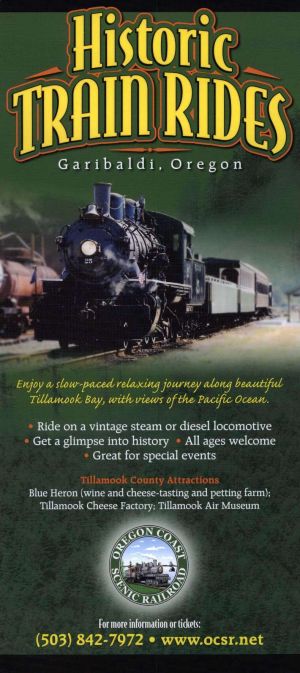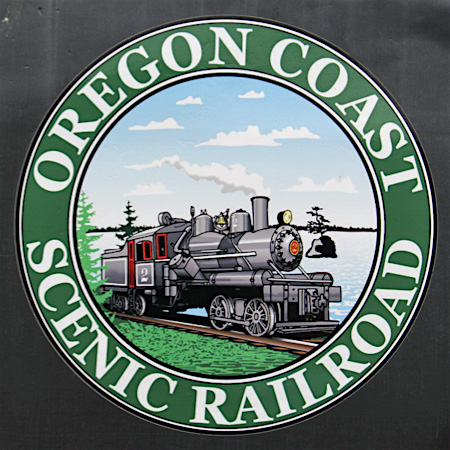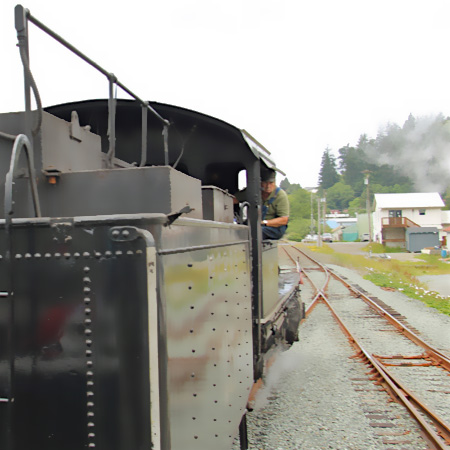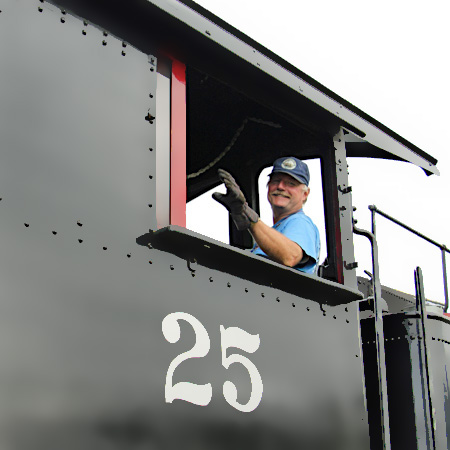
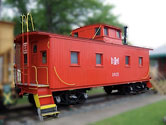




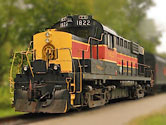
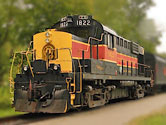
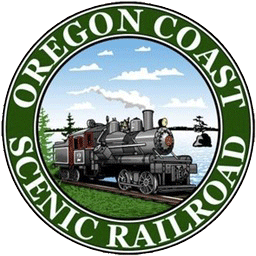 Oregon Coast Scenic Railroad
Oregon Coast Scenic Railroad
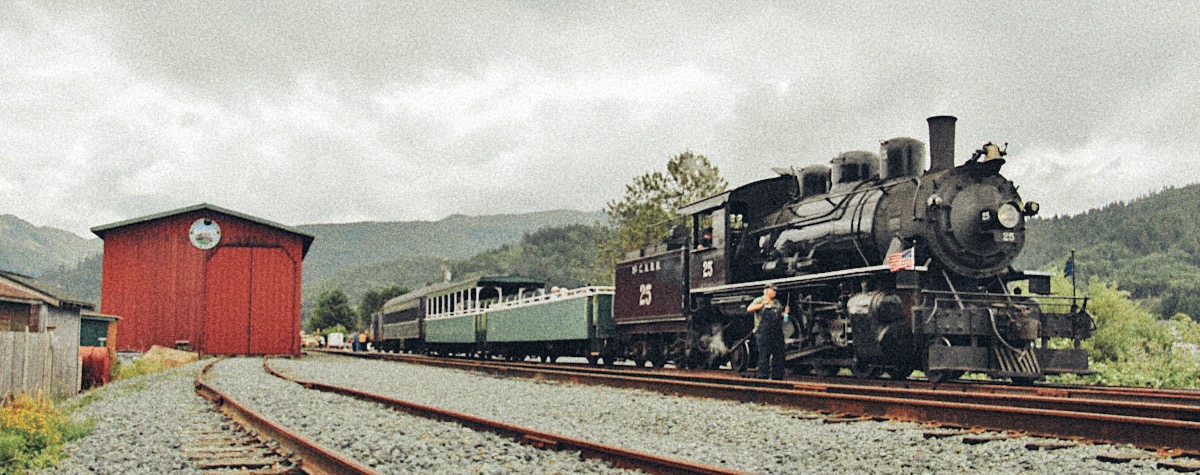
Garibaldi, Or / Jun 2016 / RWH

Founded by Scott and Kim Wickert in 2003, the Oregon Coast Scenic Railroad has grown from its humble beginnings dodging freight trains in Garibaldi on weekend runs to Rockaway Beach and Wheeler ... to the sole operator of 46 miles of the railroad between the Tillamook airport and a point 2 miles east of the railroad siding of Enright in the Oregon Coast Range. The Oregon Coast Scenic Railroad offers excursions operating daily in the summer months and special excursions operating year round. While we have grown significantly, some things haven't changed: tickets are still bought onboard the train in the caboose that doubles as ticket office and gift shop. Gifts include shirts, hats, sweaters, toy trains, pins, and much more. While the freight trains are gone, the scenery is still second to none.
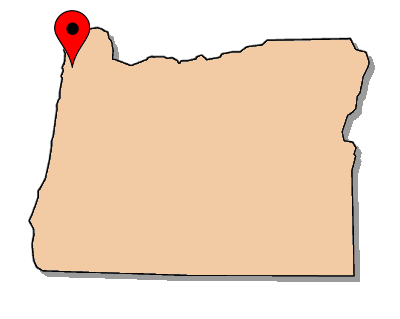 The Oregon Coast Scenic Railroad is a non-profit museum organization operating 49 picturesque miles of former Southern Pacific coastal trackage, leased from the Port of Tillamook Bay Railroad. Regularly scheduled tourist trains are operated between Garibaldi and Rockaway Beach in the summer months, usually with steam power, and special event trains are run throughout the year over the rest of the line. The branch line extends from the TIllamook Air Museum blimp hangar on the south side of Tillamook, north through Garibaldi to Rockaway Beach, then on to Wheeler where the tracks turn east along the remote Nehalem and Salmonberry River canyons. Locomotives are serviced in a small shop in Garibaldi.
The Oregon Coast Scenic Railroad is a non-profit museum organization operating 49 picturesque miles of former Southern Pacific coastal trackage, leased from the Port of Tillamook Bay Railroad. Regularly scheduled tourist trains are operated between Garibaldi and Rockaway Beach in the summer months, usually with steam power, and special event trains are run throughout the year over the rest of the line. The branch line extends from the TIllamook Air Museum blimp hangar on the south side of Tillamook, north through Garibaldi to Rockaway Beach, then on to Wheeler where the tracks turn east along the remote Nehalem and Salmonberry River canyons. Locomotives are serviced in a small shop in Garibaldi.
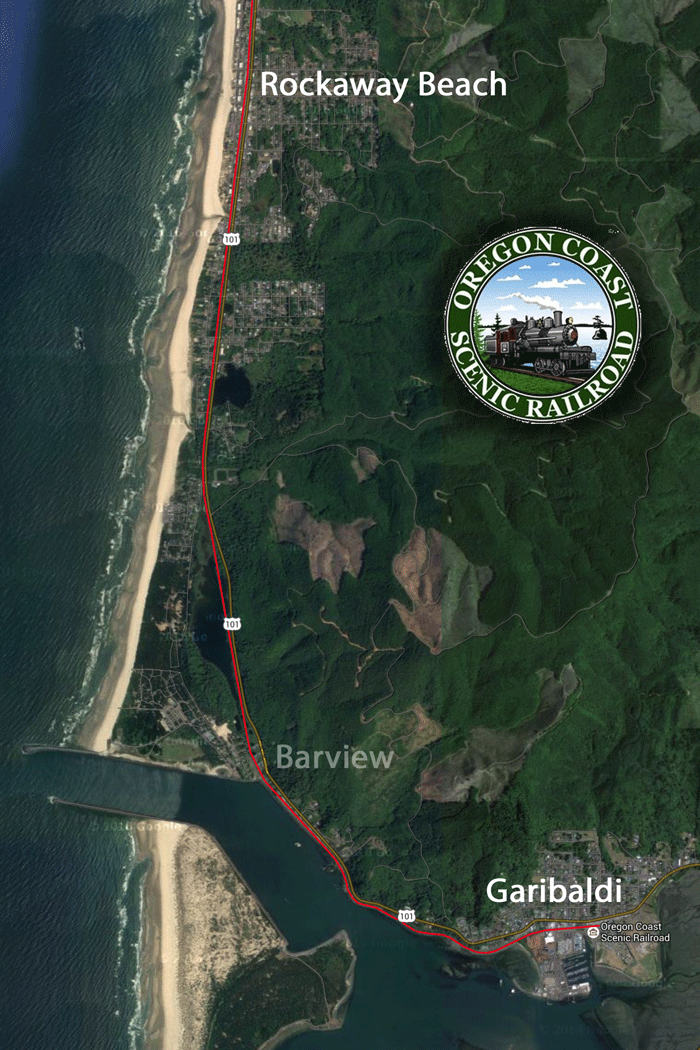
regular excursion route map / RWH
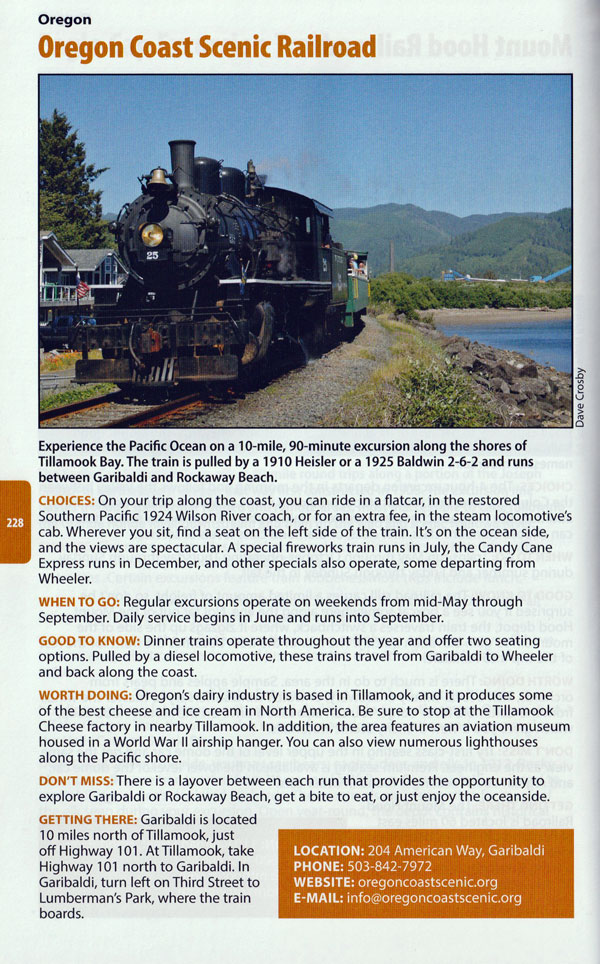
2019 tourist train guide ad / collection
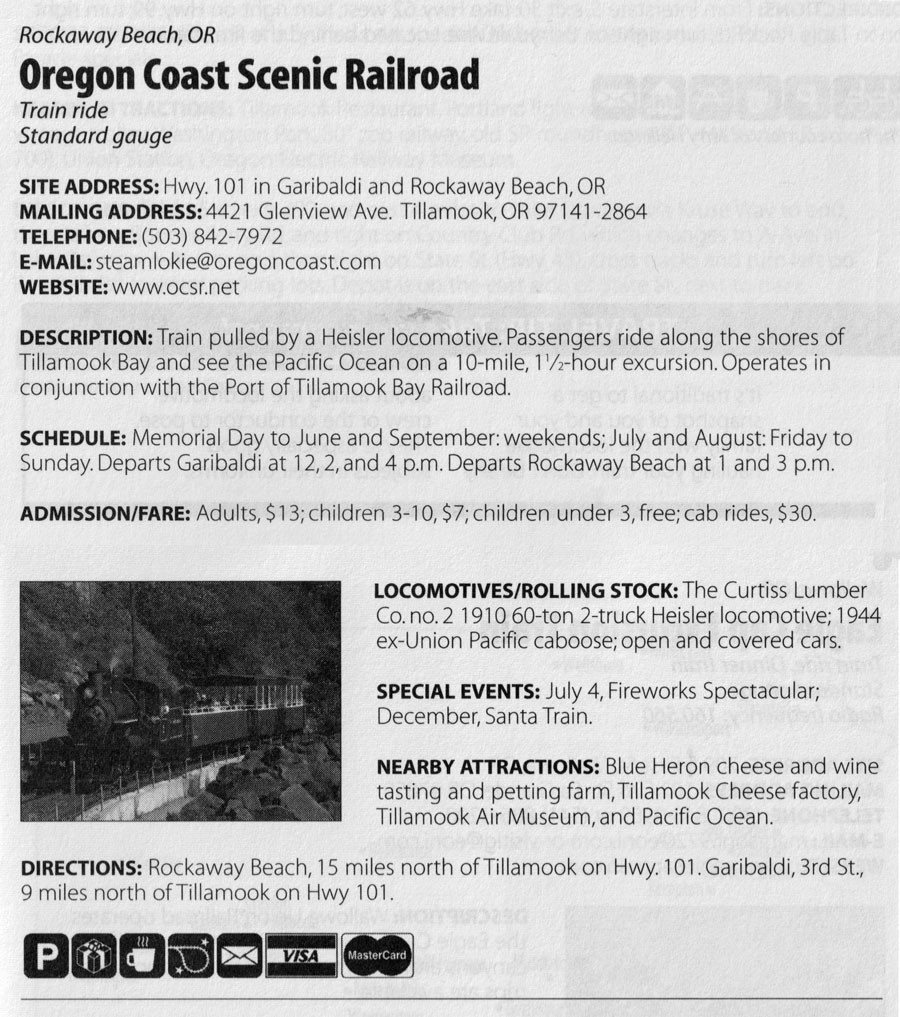
2006 tourist train guide ad / collection
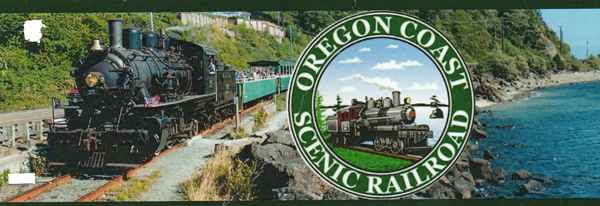
collection
Motive Power
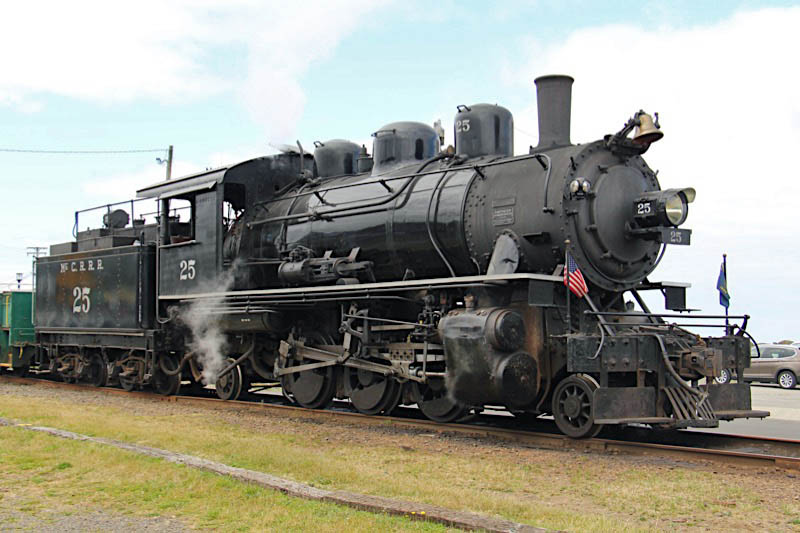
McCloud River #25
Rockaway Beach, Or / Jun 2016 / RWH


McCloud River #25
to Oregon Coast Scenic Railroad, 2011

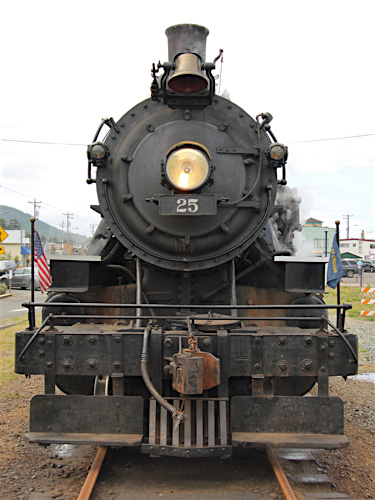
Jun 2016 / RWH
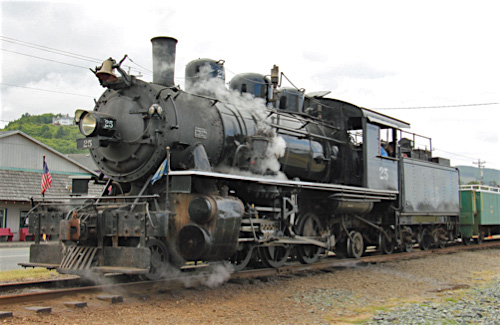
Rockaway Beach, Or / Jun 2016 / RWH

Rockaway Beach, Or / Jun 2016 / RWH
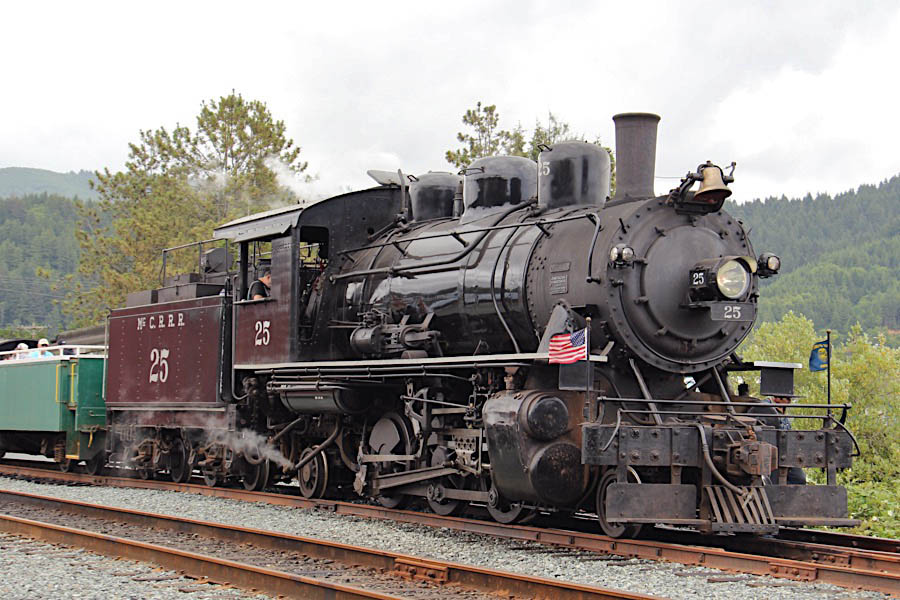
Garibaldi, Or / Jun 2016 / RWH

In early 2011, an active member of Oregon Coast Scenic Railroad made possible the purchase of #25 from the McCloud Railroad with a loan. After negotations with the McCloud Railroad, a price was agreed upon and plans to move the engine from McCloud, its home of 86 years, began. In late March, 2011, OCSR crew members descended on McCloud, CA, and began the preparations to move the locomotive. On March 30, 2011, the McCloud 25 left McCloud for the final time on the back of a low-boy trailer headed for the Oregon Coast. After a 400-mile trip up Interstate 5 and across the Coast Range Mountains, the McCloud engine arrived in Tillamook on March 31. OCSR crews met the engine at the Port of Tillamook Bay, in front of the World War II blimp hanger that houses the Tillamook Air Museum. After several hours of work, the engine rested on rail once more and was moved inside the museum for storage until a proper home could be arranged in Garibaldi. In August the engine was moved to Garibaldi to begin hauling passengers once again.
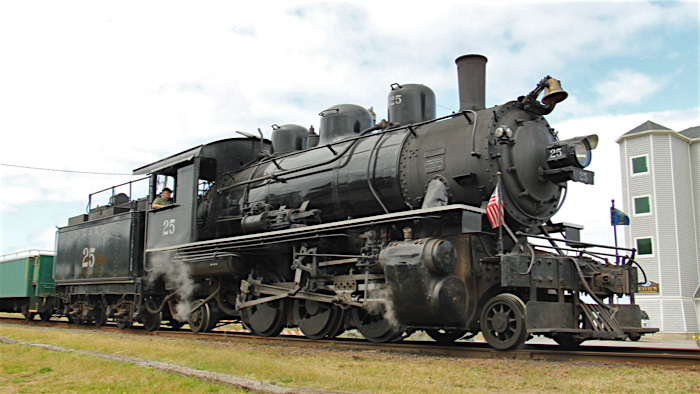
Rockaway Beach, Or / Jun 2016 / RWH
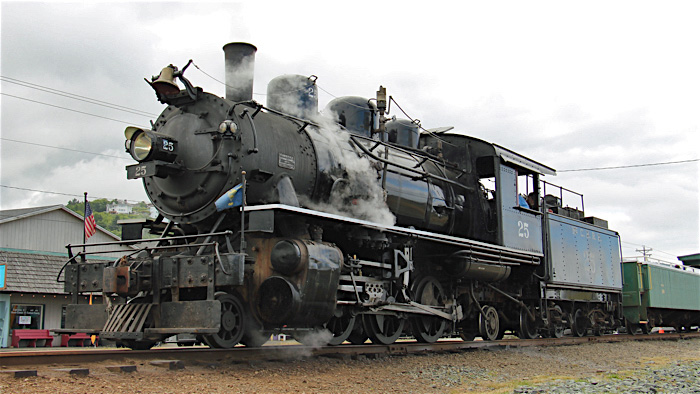
Rockaway Beach, Or / Jun 2016 / RWH

Jun 2016 / RWH
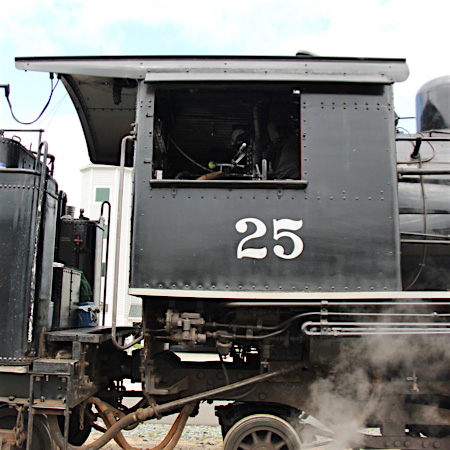
Rockaway Beach, Or / Jun 2016 / RWH
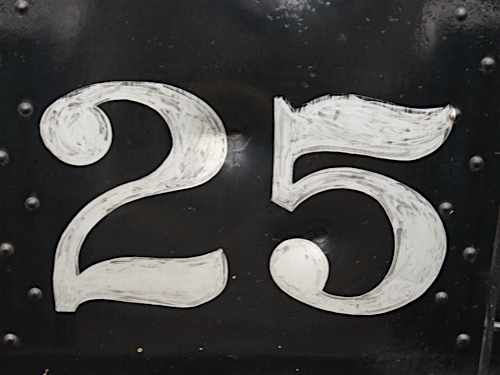
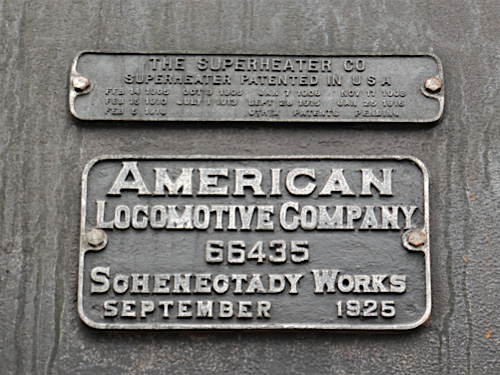
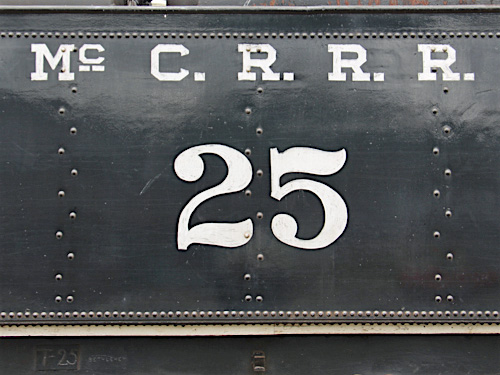
Jun 2016 / RWH
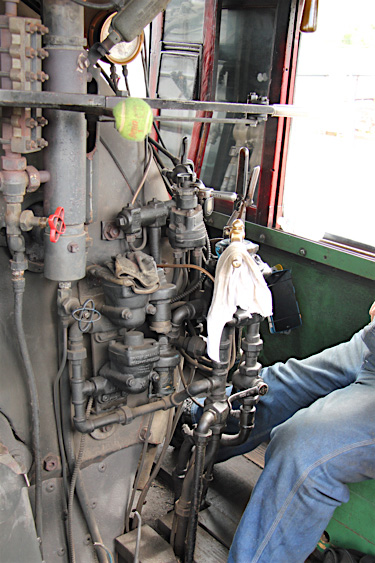
Jun 2016 / RWH
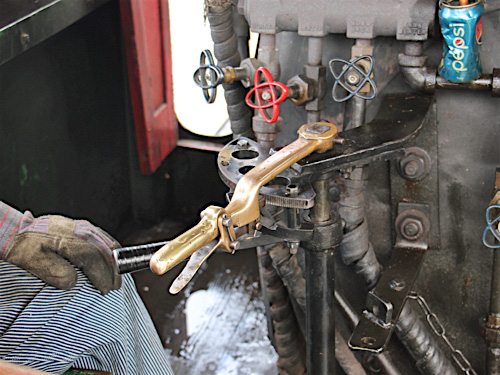
Rockaway Beach, Or / Jun 2016 / RWH
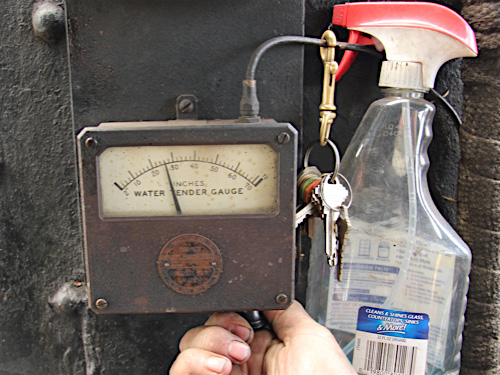
Rockaway Beach, Or / Jun 2016 / RWH
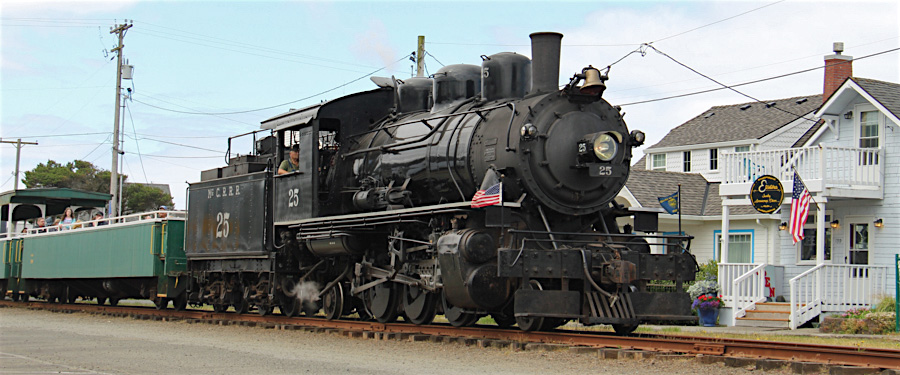
Rockaway Beach, Or / Jun 2016 / RWH
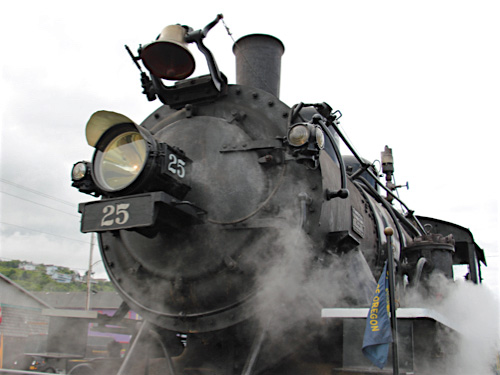
Rockaway Beach, Or / Jun 2016 / RWH
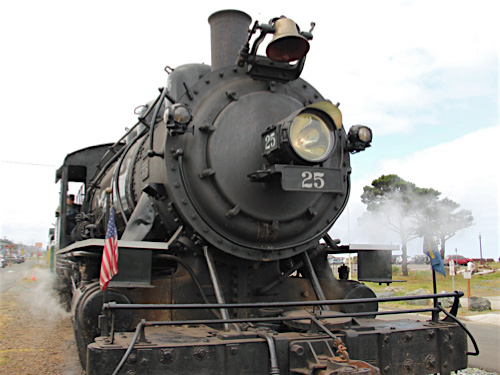
Rockaway Beach, Or / Jun 2016 / RWH
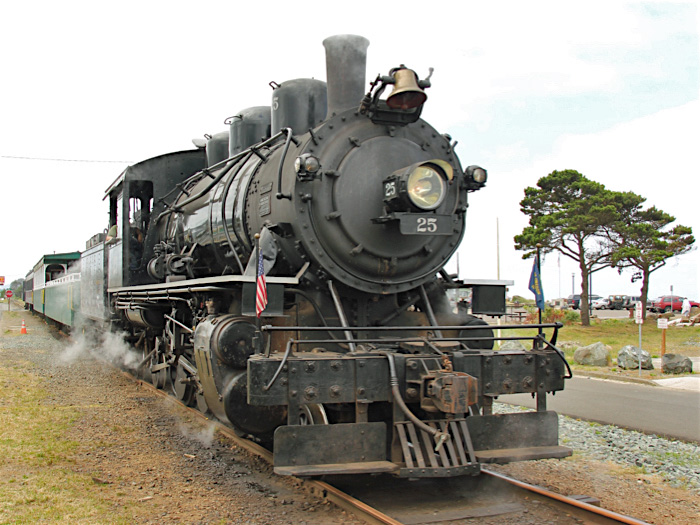
Rockaway Beach, Or / Jun 2016 / RWH
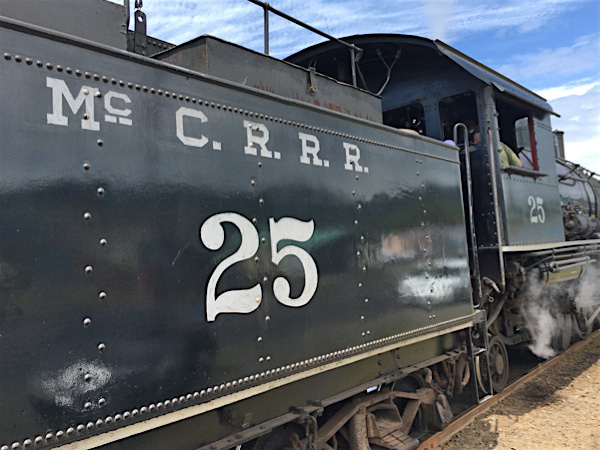
Rockaway Beach, Or / Jun 2016 / RWH
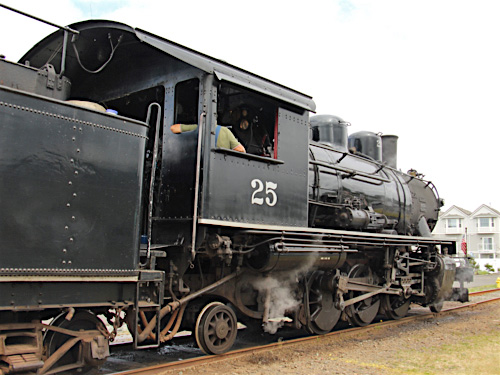
Rockaway Beach, Or / Jun 2016 / RWH

Jun 2016 / RWH
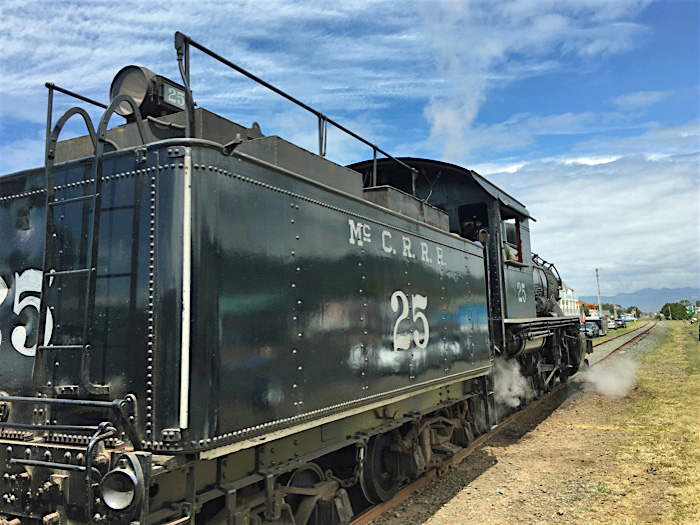
Rockaway Beach, Or / Jun 2016 / RWH
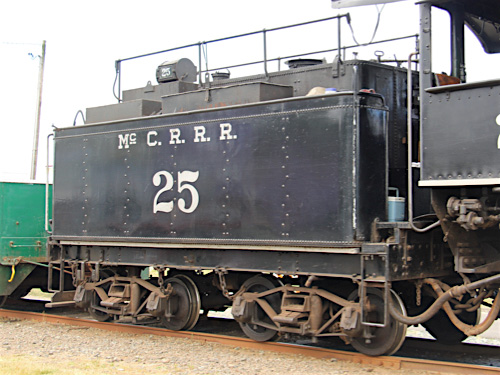
Rockaway Beach, Or / Jun 2016 / RWH
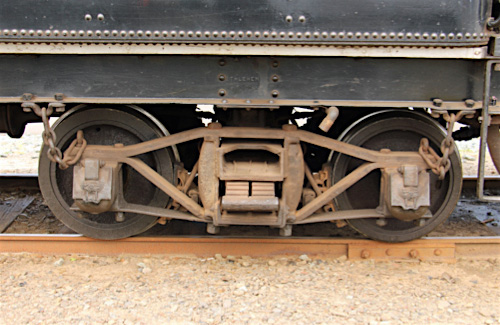
Rockaway Beach, Or / Jun 2016 / RWH
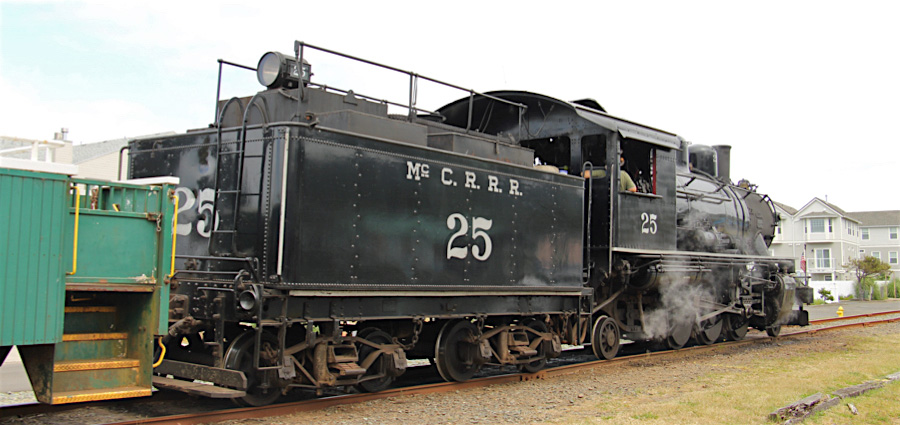
Rockaway Beach, Or / Jun 2016 / RWH
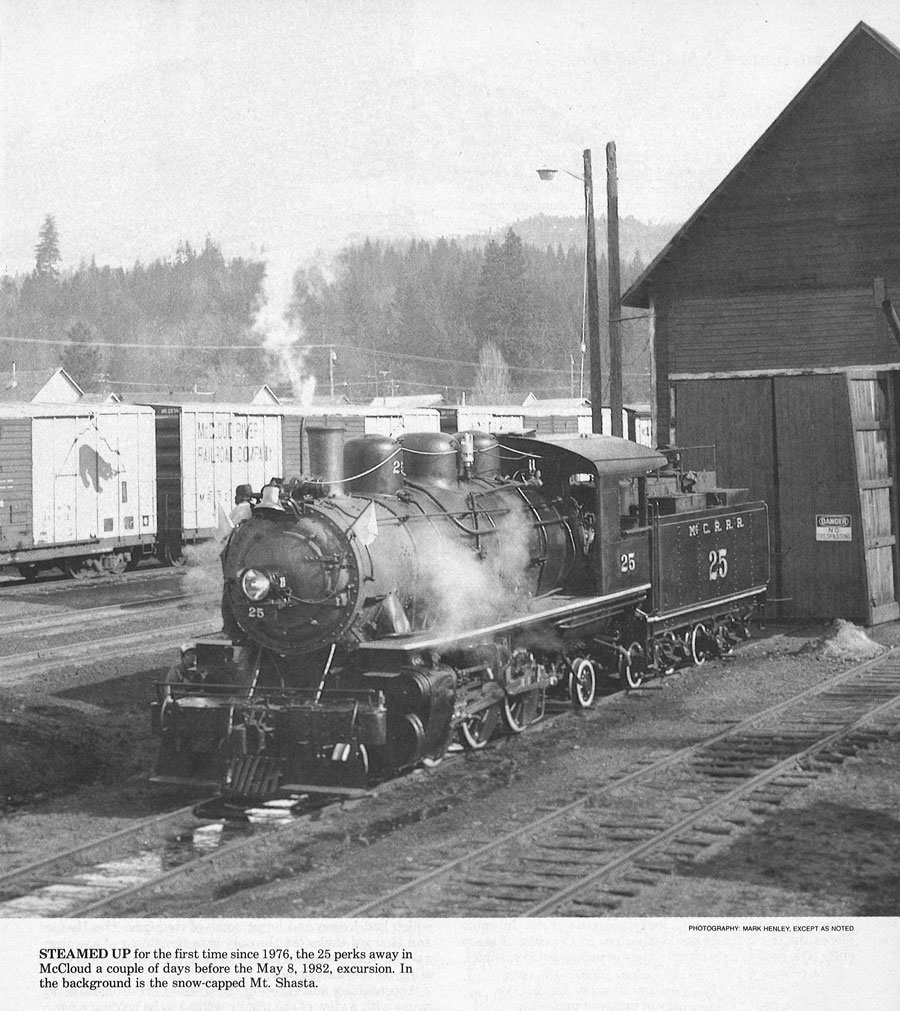
from Railfan & Railroad
- Nov 1982 / collection

from Railfan & Railroad
- Nov 1982 / collection
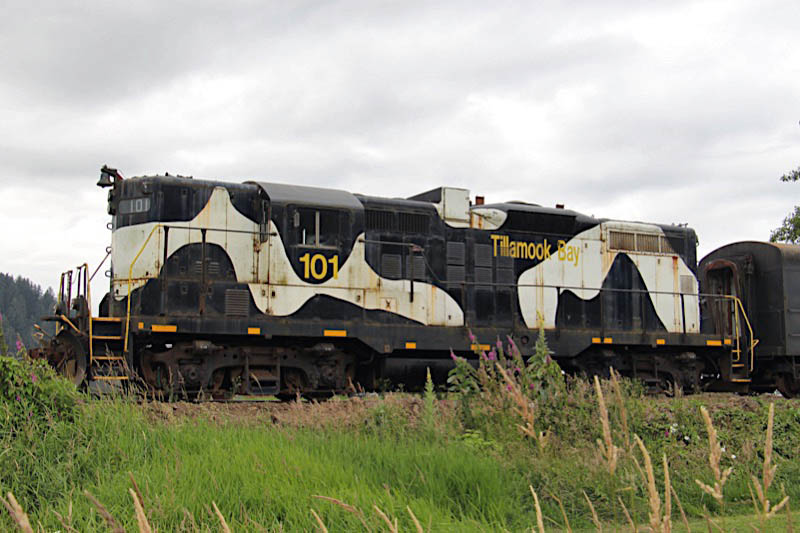
Port of Tillamook Bay #101
Garibaldi, Or / Jun 2016 / RWH


Port of Tillamook Bay #101
to Huron & Eastern #101
to Idaho Northern & Pacific #101
to Port of Tillamook Bay #101

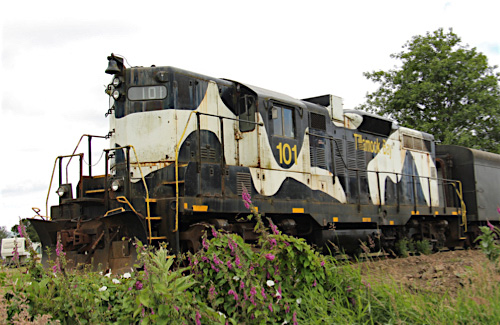
Garibaldi, Or / Jun 2016 / RWH
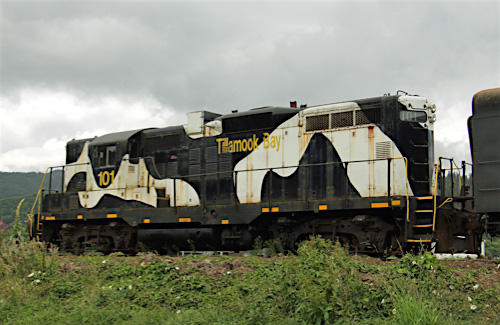
Garibaldi, Or / Jun 2016 / RWH

Garibaldi, Or / Jun 2016 / RWH

Garibaldi, Or / Jun 2016 / RWH
Rolling Stock
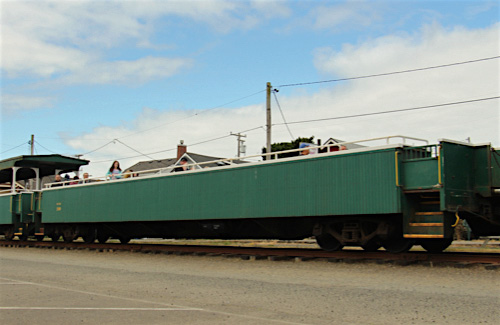
Oregon Coast Scenic #100
open excursion car / Rockaway Beach, Or / Jun 2016 / RWH
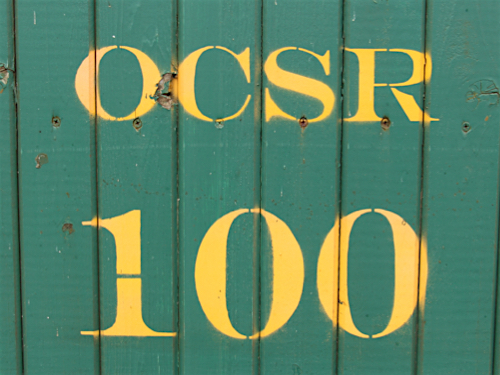
RWH
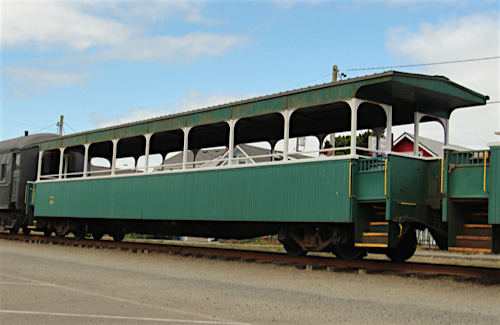
Oregon Coast Scenic #200
open excursion car / Rockaway Beach, Or / Jun 2016 / RWH
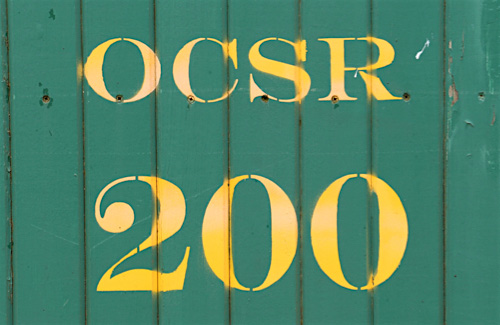
RWH
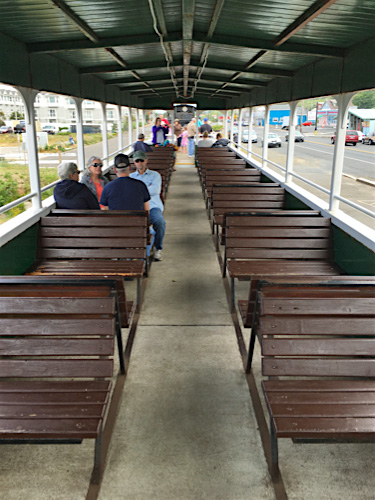
Jun 2016 / RWH
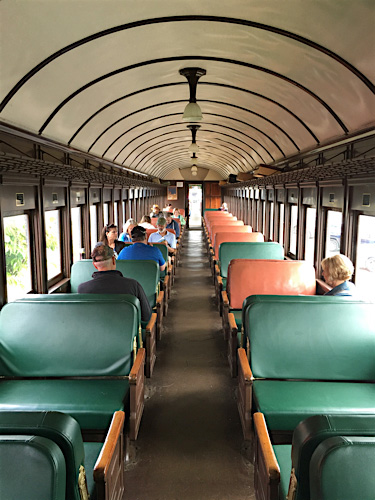
Jun 2016 / RWH
 "Wilson River"
"Wilson River"
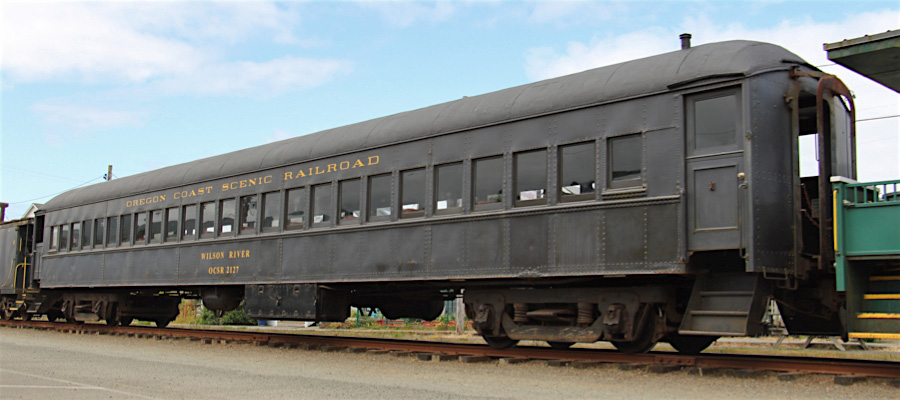
Oregon Coast Scenic #2127 "Wilson River"
ex Southern Pacific commuter coach (1924) / Rockaway Beach, Or / Jun 2016 / RWH
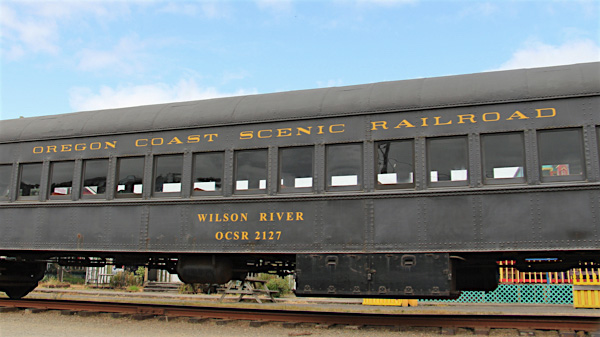
Rockaway Beach, Or / Jun 2016 / RWH
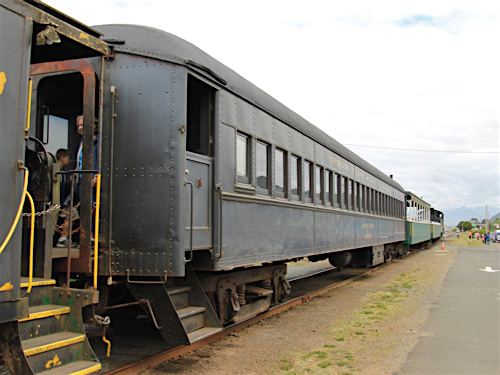
Rockaway Beach, Or / Jun 2016 / RWH

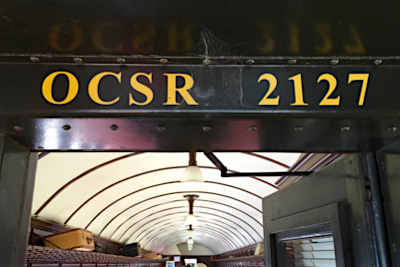 Car Number 2127 was built for the Southern Pacific Railroad in 1924 as a 96 seat coach to be used in commuter train service in the San Francisco Bay Area. In 1984 2127 was bought by Fred Kepner and moved to Yreka, Calfornia for storage. In 2006 one of Kempner's steam locomotives was in danger of being scrapped in McCloud, CA. Kempner contacted OCSR and a deal was struck whereby OCSR would move the locomotive to Merrill, OR in exchange for 2127 and two other similar cars stored on the Yreka Western property. In the spring of 2008 the car was moved from Montague, CA to Tillamook, OR to begin restoration. The car is current operational on our costal excursion train and has be given the name "Wilson River" in honor one of the rivers that flows into Tillamook Bay.
In 2007 the National Railway Historical Society graciously awarded OCSR a $3,500 Railway Heritage Grant contributing to the restoration of SP 2127. OCSR thanks NRHS for their contribution to the preservation of this historic passenger car and looks forward to working with other grant funders to complete the restoration.
Car Number 2127 was built for the Southern Pacific Railroad in 1924 as a 96 seat coach to be used in commuter train service in the San Francisco Bay Area. In 1984 2127 was bought by Fred Kepner and moved to Yreka, Calfornia for storage. In 2006 one of Kempner's steam locomotives was in danger of being scrapped in McCloud, CA. Kempner contacted OCSR and a deal was struck whereby OCSR would move the locomotive to Merrill, OR in exchange for 2127 and two other similar cars stored on the Yreka Western property. In the spring of 2008 the car was moved from Montague, CA to Tillamook, OR to begin restoration. The car is current operational on our costal excursion train and has be given the name "Wilson River" in honor one of the rivers that flows into Tillamook Bay.
In 2007 the National Railway Historical Society graciously awarded OCSR a $3,500 Railway Heritage Grant contributing to the restoration of SP 2127. OCSR thanks NRHS for their contribution to the preservation of this historic passenger car and looks forward to working with other grant funders to complete the restoration.
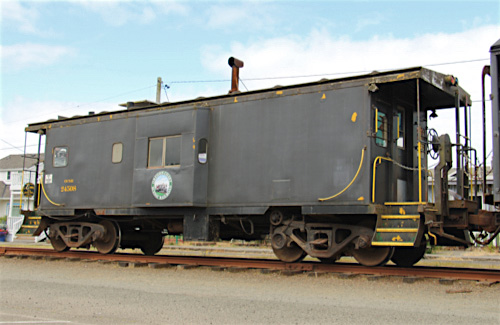
Oregon Coast Scenic #24508
ex Rock Island bay window caboose / Rockaway Beach, Or / Jun 2016 / RWH
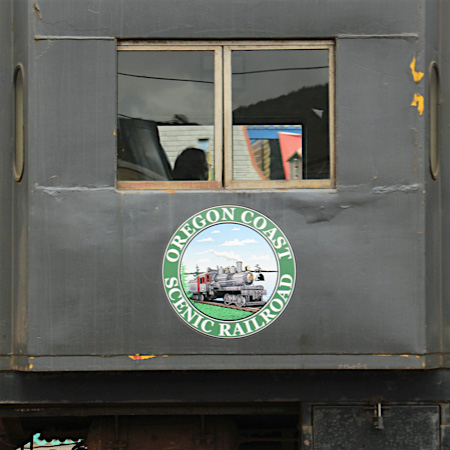
RWH

Rockaway Beach, Or / Jun 2016 / RWH

Garibaldi, Or / Jun 2016 / RWH

Garibaldi, Or / Jun 2016 / RWH
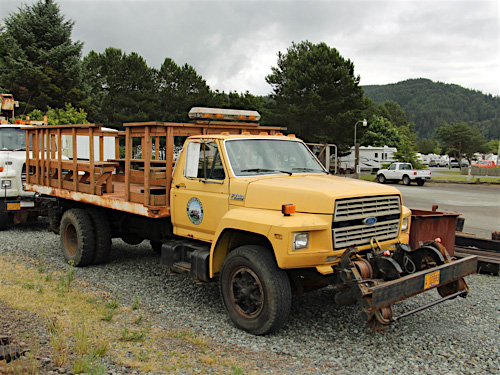
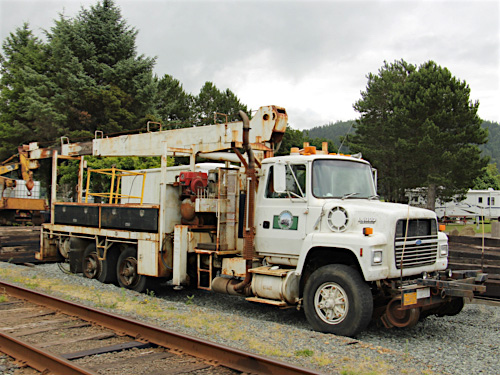

Garibaldi, Or / Jun 2016 / RWH
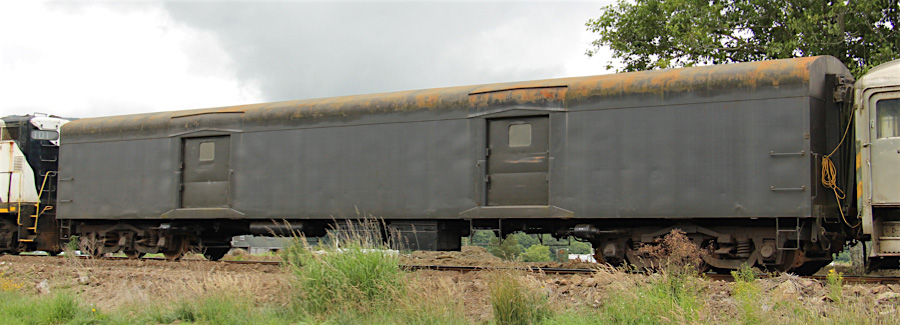
excursion car / Garibaldi, Or / Jun 2016 / RWH
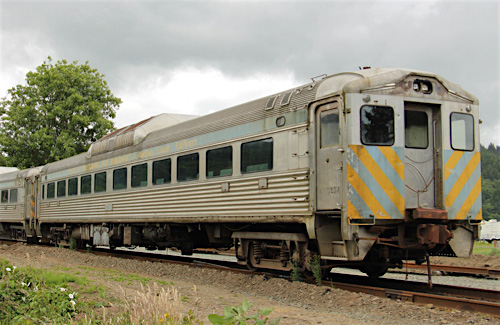
Port of Tillamook Bay #552
Budd RDC car / Garibaldi, Or / Jun 2016 / RWH
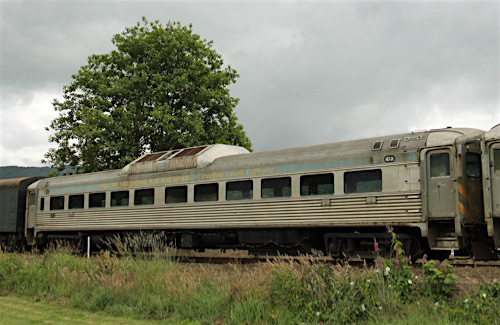
Port of Tillamook Bay #553
Budd RDC car / Garibaldi, Or / Jun 2016 / RWH
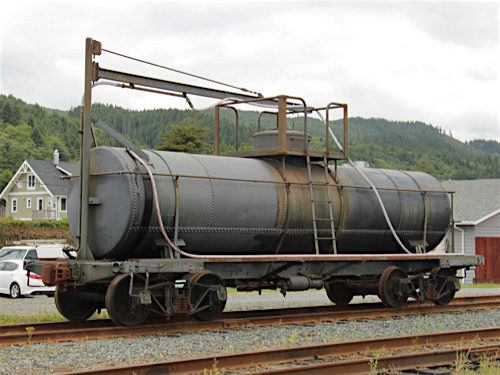
Garibaldi, Or / Jun 2016 / RWH
Locations
 Garibaldi
Garibaldi

Engine house
Garibaldi, Or / Jun 2016 / RWH
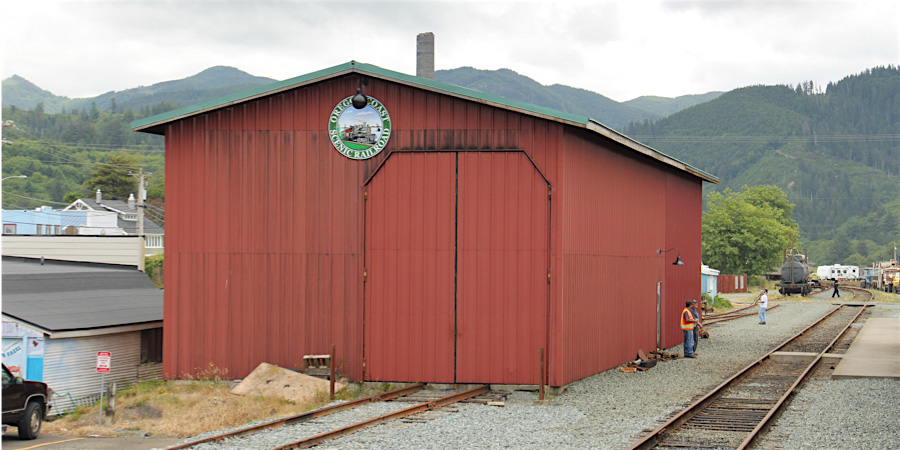
Garibaldi, Or / Jun 2016 / RWH

Click to see the Garibaldi engine house area plotted on a Google Maps page
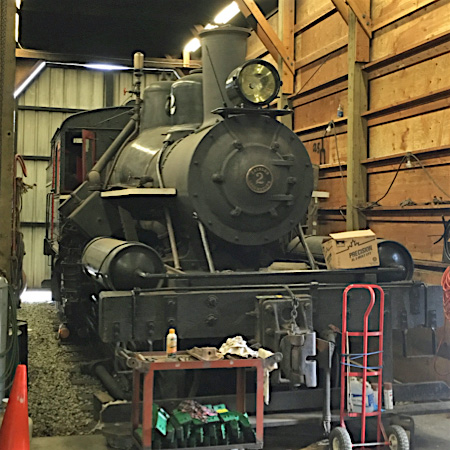
Curtiss Lumber Co. #2
Garibaldi, Or / Jun 2016 / RWH


Curtiss Lumber Co. #2
to Hammond Lumber Co.
to Mill City Manufacturing
to Vancouver Plywood & Veneer Co.
to Willis Shingle Co.
to private ownership
in operation
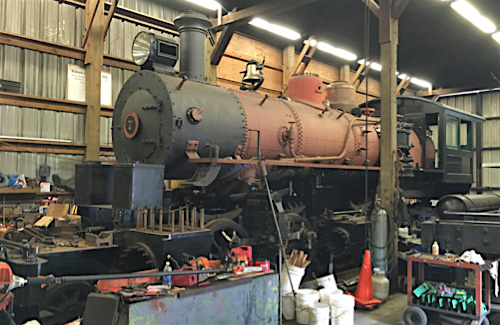
Deep River Logging #7 "Skookum"
Garibaldi, Or / Jun 2016 / RWH


Deep River Logging #7 "Skookum"
23"x22" low pressure cylinders
48" drivers, 71 tons
to Columbia River Belt Line
to Larkin & Green Logging Co., et al
to Deep River Logging Co.
to private ownership, restored to service
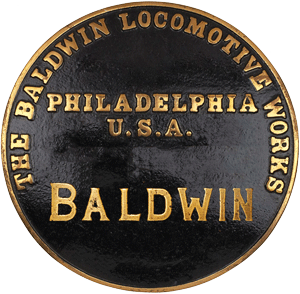

After 64 years the illustrious Skookum rides the rails again
by Brian Cameron - The North Coast Citizen

The little engine that could, finally did. During the evening of Saturday, March 2, members of the steam rail community, from near and far, came together to celebrate the finalization of the Skookum engine restoration.
The event was held at Garibaldi’s Old Mill and featured an historical presentation where original stories and photographs were shown, as well as an emotional speech by Chris Baldo and Scott Wickert themselves.
During a cold February day in 1955 the crews of the Deep River Logging Company, along Washington’s Columbia River rainforest, were finishing up their lunch hour to ready their Number-7 engine, casually referred to as “Skookum,” for more loads of fir, spruce and hemlock to be transported back to camp.
Just after lunch they backed her up, tender first, to head on out to pick up more for the day’s haul. Several miles outside of camp the massive engine crept over a small trestle when a loud noise rang out, the engineer slammed the throttle shut and Deep River Logging #7 abruptly halted her advance. Her tender lay half-cocked, off the rails, over the small creek below.
Skookum herself was still sitting well, with a noticeable list, the crew decided they would be better off getting their other locomotive from camp to tow her back on track the next morning Before doing so the engine’s fireman thought it necessary to re-board and inject more water into her boiler so as to keep her ready for service the following day. It was that fateful decision that sealed Skookum’s fate.
“[It was] as if an elephant had simply rolled over on its side to go to sleep,” recalled one crewman at the time. The offset of water running into Skookum’s boiler effected her center of gravity and in slow succession the great engine toppled onto her side into the wet soil below. And there she sat.
It wasn’t until the summer of 1960, and after a change in land ownership, was the wreck revisited with a noble intent. Charlie Morrow, hailing from the Puget Sound Railway Historical Association in Snoqualmie, Washington, bought the Skookum from the insurance company for the low scrap-metal price of $1,200. Shortly after purchasing it he began the monumental task of resurrection, and despite the lack of the rail itself, as it was sold for scrap metal previously, Morrow was able to utilize volunteer efforts to exhume the wreck to be brought to the Niblock Yard at the Puget Sound Railway Heritage Association’s headquarters. And there the Skookum sat, once again.
In 1978, after the death of Charles Morrow, the Skookum project was reinvigorated after a California lumberman named Rogan Coombs purchased the locomotive with the eventual intent to restore her to her former glory. However after negotiating the physical move of Skookum it wasn’t until 1991 that Coombs was able to facilitate the move to the Mount Rainier Scenic Railroad (MRSR). It seemed after 31 years of stagnation that the project would be underway.
However the ides of financial boom for Coombs never came. And Skookum sat.
In 2004 Coombs’s health began to fail, so after contacting another rail enthusiast, Chris Baldo, out of Willits California, it was decided another change in ownership would commence. Baldo, with the help of a young rail apprentice, Scott Wickert, took it upon themselves to truly restore Skookum to her former glory.
Wickert left the MRSR and moved to the Tillamook area with the intent to create the Tillamook Locomotive Works, as well as a tourism side in the form of the Oregon Coast Scenic Railroad. It was there, in Garibaldi, that the intricate process of piecing history back together began. Over the subsequent years the Skookum’s parts were collected from the MRSR and taken to Garibaldi where they slowly but surely assembled Skookum and began to make her whole once again.
“It’s exciting and very satisfying to see this all happening,” said Scott Wickert of the Oregon Coast Scenic Railroad. “To get the steam world together for this restoration, I’m kind of proud.”
The gathering on March 2 in Garibaldi marked the end of an entire generation’s worth of perseverance, hard work and ad-hoc engineering. A project that brought together the who’s-who in the steam-rail industry and restored an icon from days passed.
“It’s a good feeling for everyone on the project,” said Scott Hutton, volunteer engineer. “We get to keep history alive, its a machine from our past and its been a really big project.”
Hutton had joined onto the project approximately a year ago and he was one of many who fed into the overall completion of Skookum. Scott Wickert, however, had been part of Skookum since he was at the Mount Rainier Scenic Railroad, and after so many years he feels a sense of finality with the undertaking.
“This is been my life since 2004,” said Wickert. “I’m happy to be able to give it a second life, and I know after she’s going into good hands.” Skookum’s owner, Chris Baldo, after facilitating the undertaking, is looking at this project as a positive sign for the future of historic rail restoration. Though this project has now come to completion, there are a number of future endeavors he wants to tackle.
“Pretty much everyone thought that this project was impossible,” said Baldo. “But its the kind of project that takes the skills of a massive amount of people, and I’m happy to see most of those faces here tonight.”
When asked how he felt when he first heard the original whistle, Baldo replied. “I like watching the reaction of everyone around me, I’m happy to bring her back to life again.”
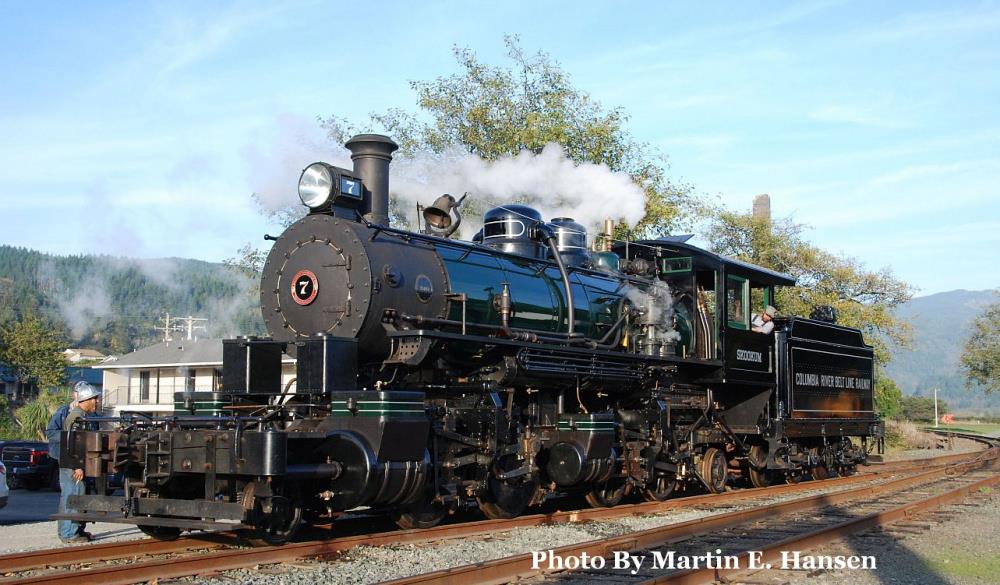
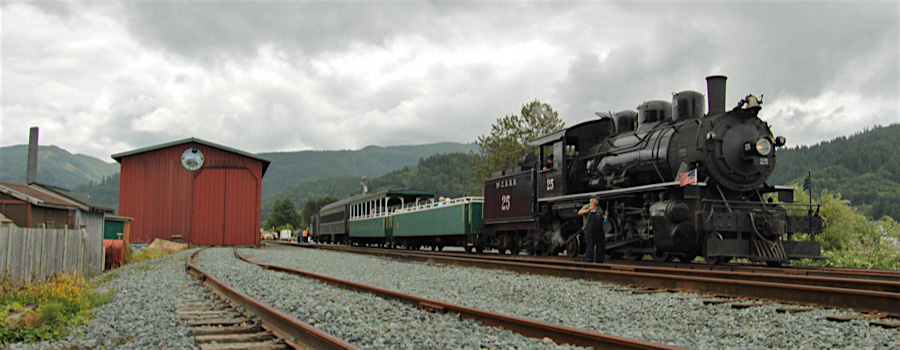
Garibaldi, Or / Jun 2016 / RWH
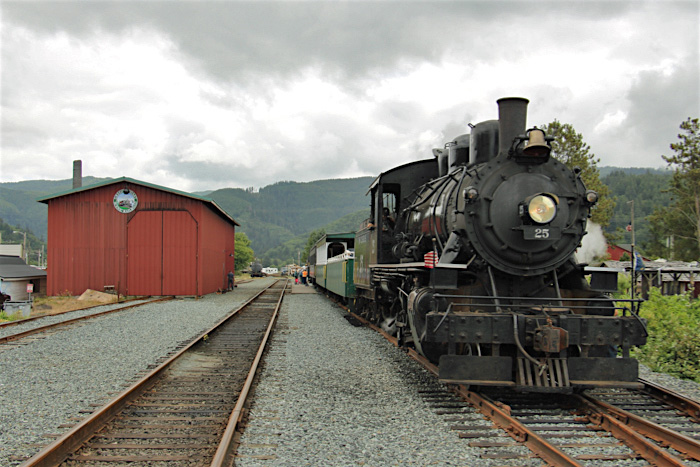
Garibaldi, Or / Jun 2016 / RWH
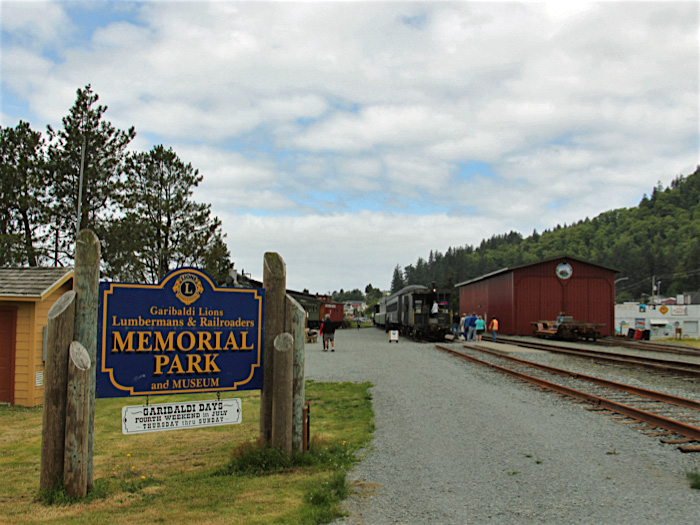
Garibaldi, Or / Jun 2016 / RWH
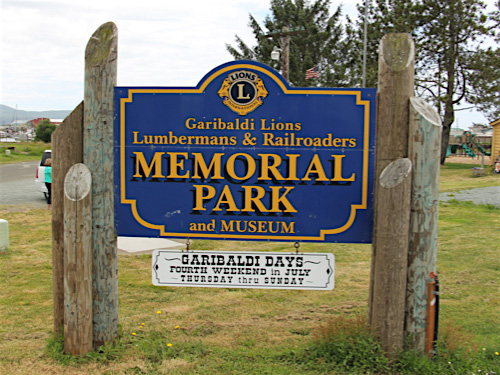
Garibaldi, Or / Jun 2016 / RWH
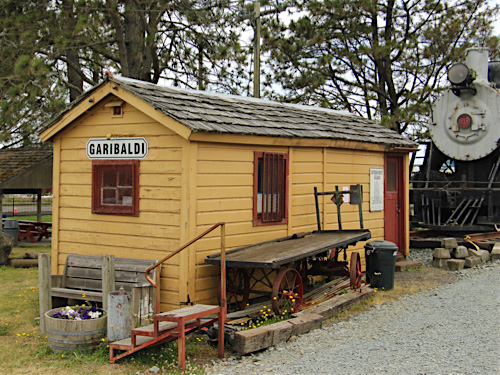
Garibaldi, Or / Jun 2016 / RWH
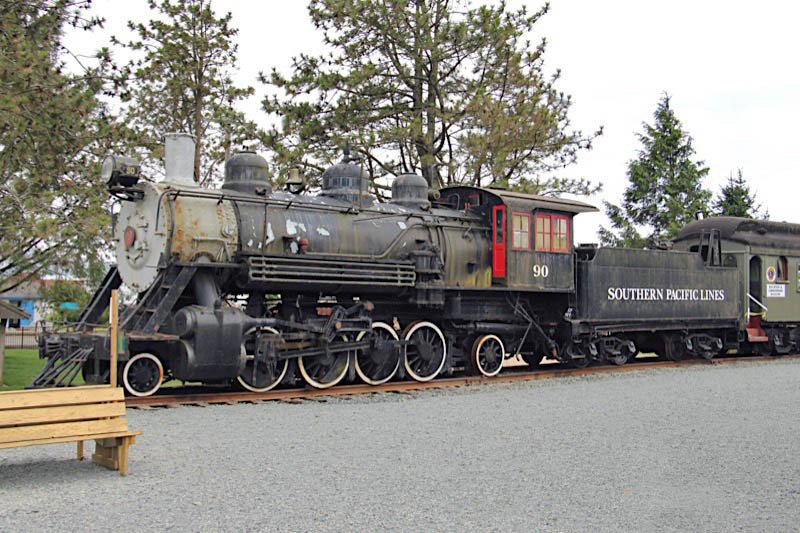
Polson Logging #90
Garibaldi, Or / Jun 2016 / RWH


Polson Logging #90
painted Southern Pacific
on display in Garibaldi park


Garibaldi, Or / Jun 2016 / RWH
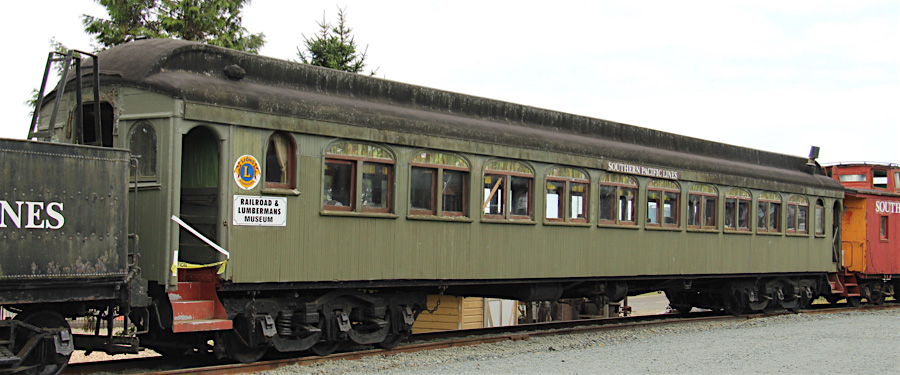
Garibaldi, Or / Jun 2016 / RWH

Southern Pacific #85
Garibaldi, Or / Jun 2016 / RWH
 Rockaway Beach
Rockaway Beach
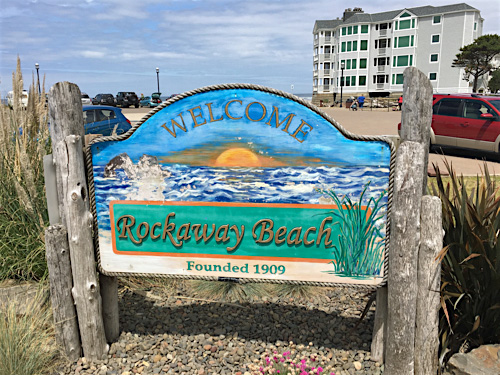
Rockaway Beach, Or / Jun 2016 / RWH
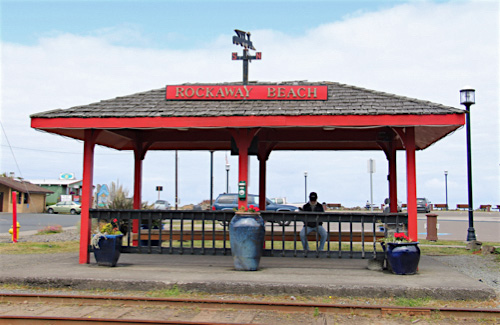
Rockaway Beach, Or / Jun 2016 / RWH
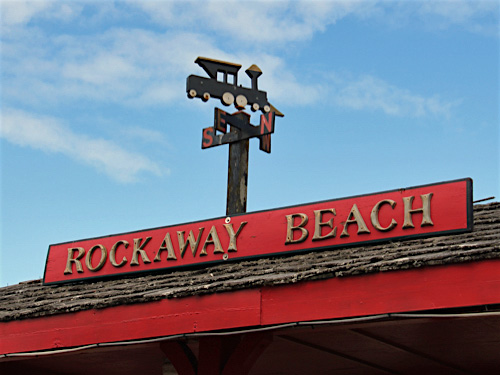
Rockaway Beach, Or / Jun 2016 / RWH
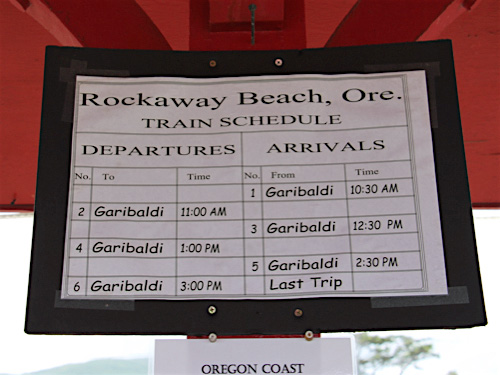
Rockaway Beach, Or / Jun 2016 / RWH

Click to see the Rockaway Beach depot area plotted on a Google Maps page
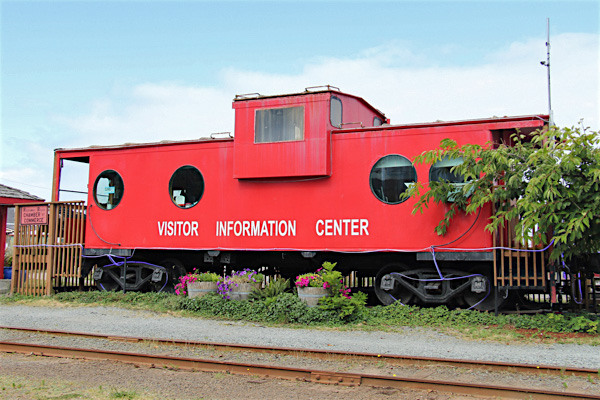
Rockaway Beach, Or / Jun 2016 / RWH
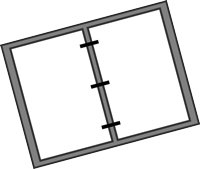 Scrapbooks
Scrapbooks
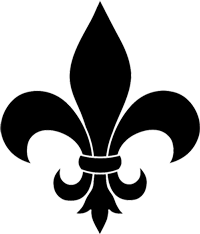 Lagniappe
Lagniappe
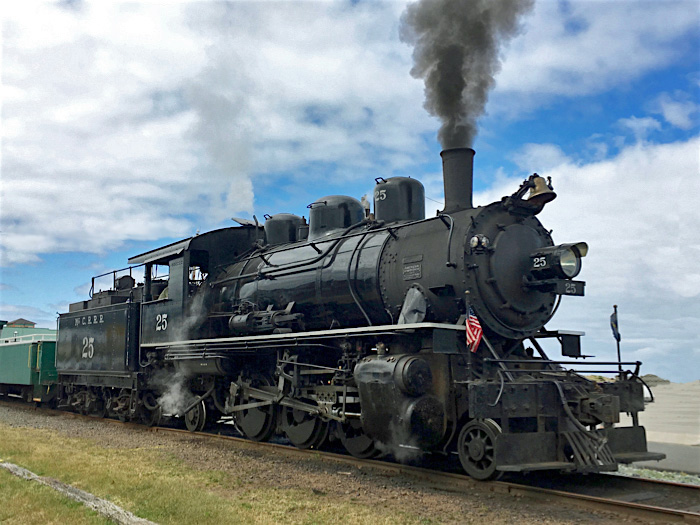
Schenectady on the Coast
Rockaway Beach, Or / Jun 2016 / RWH

No Puffing
RWH
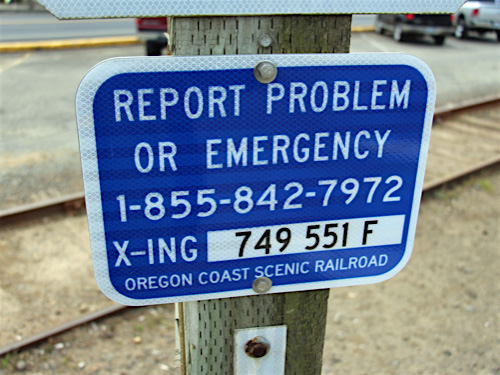
Report Problems
Rockaway Beach, Or / Jun 2016 / RWH
Snapshots
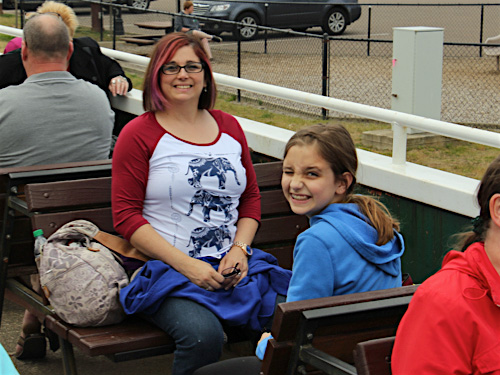
Rockaway Beach, Or / Jun 2016 / RWH
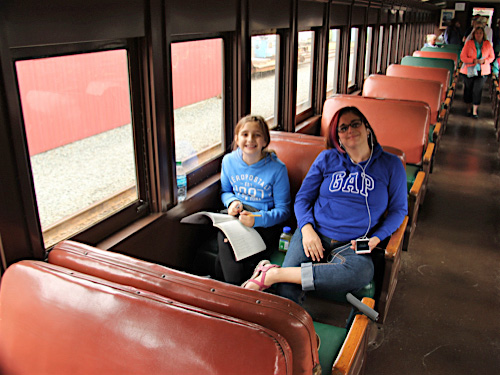
Garibaldi, Or / Jun 2016 / RWH
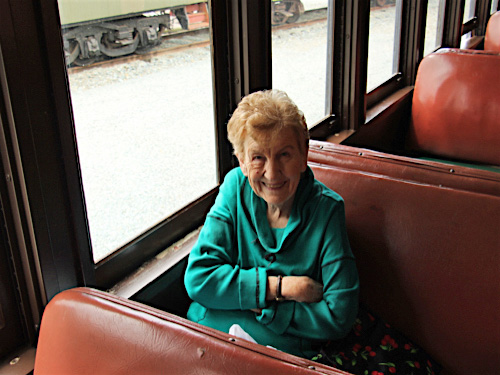
Garibaldi, Or / Jun 2016 / RWH
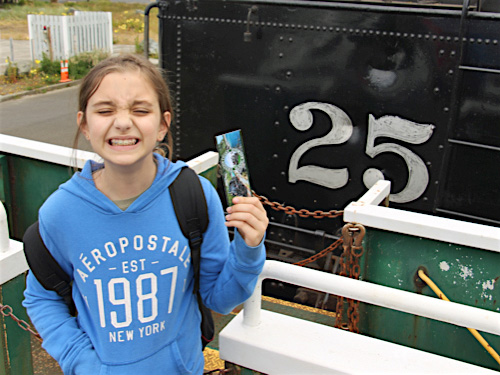
Rockaway Beach, Or / Jun 2016 / RWH

Rockaway Beach, Or / Jun 2016 / RWH
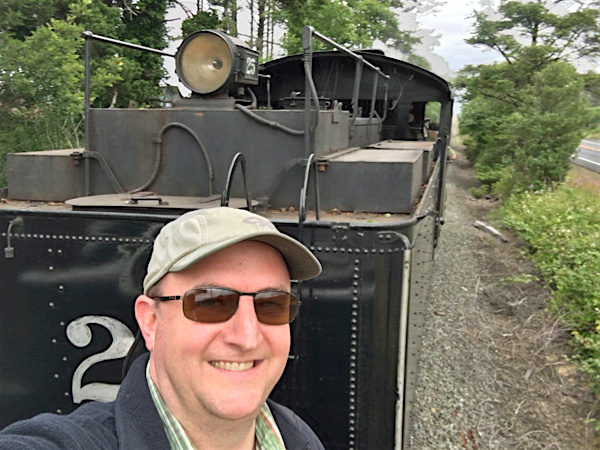
Jun 2016 / RWH
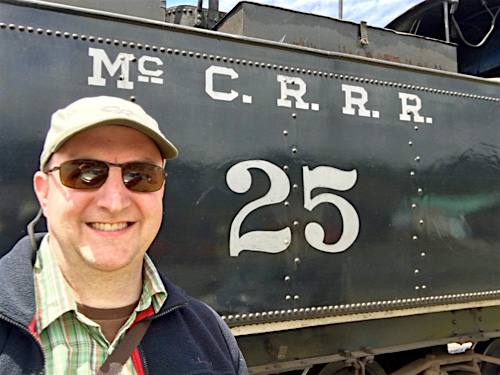
Rockaway Beach, Or / Jun 2016 / RWH
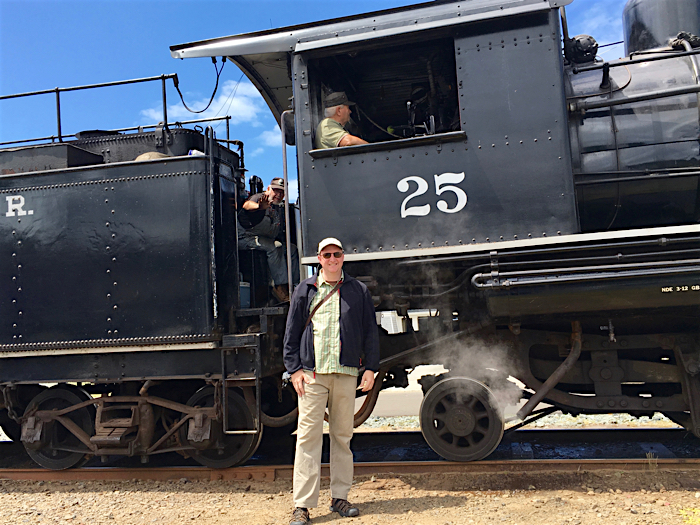
Rockaway Beach, Or / Jun 2016 / RWH
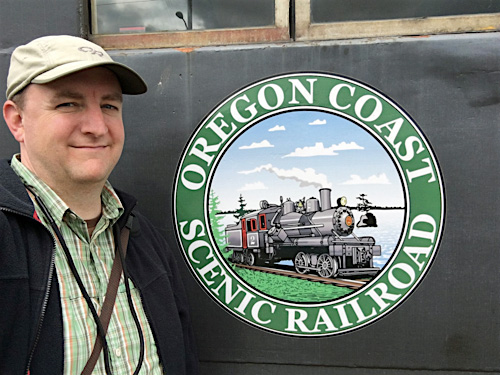
Rockaway Beach, Or / Jun 2016 / RWH
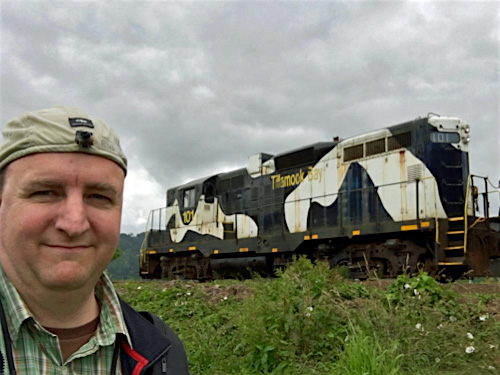
Garibaldi, Or / Jun 2016 / RWH

Barview, Or / Jun 2016 / RWH
Links / Sources
- Oregon Coast Scenic Railroad website
- Surviving Steam Locomotives in Oregon
- Wikipedia article for Oregon Coast Scenic Railroad
- Diesel Shop roster for Port of Tillamook Bay Railroad
- Port of Tillamook Bay Railfan's Guide

